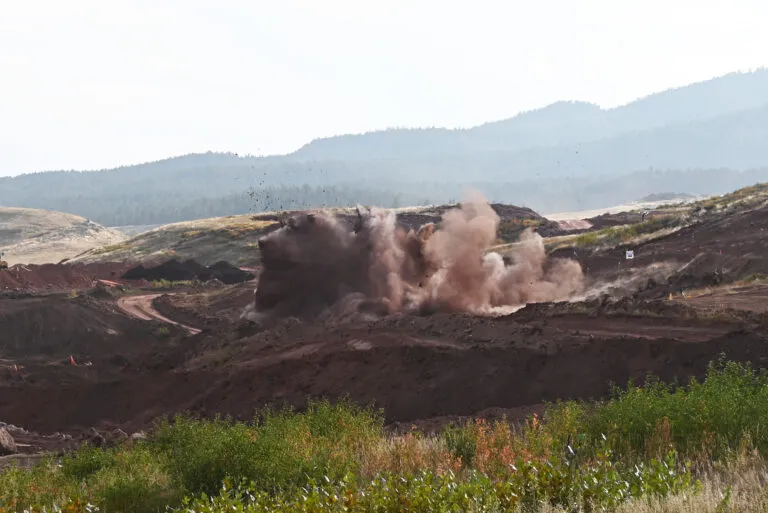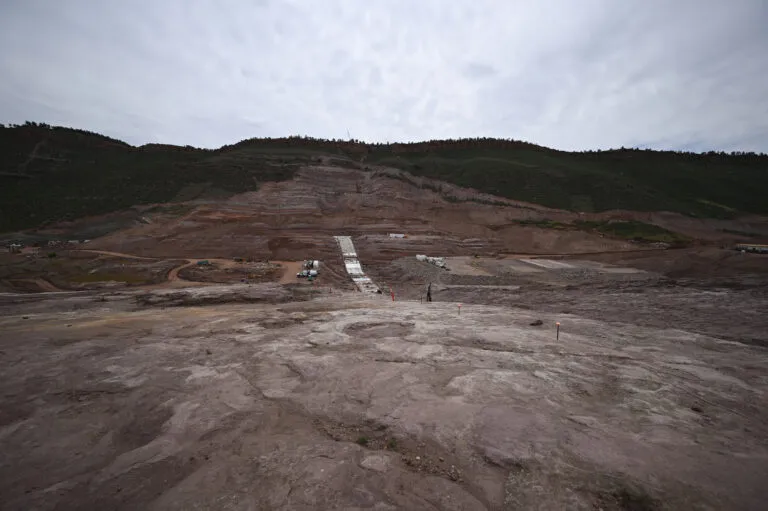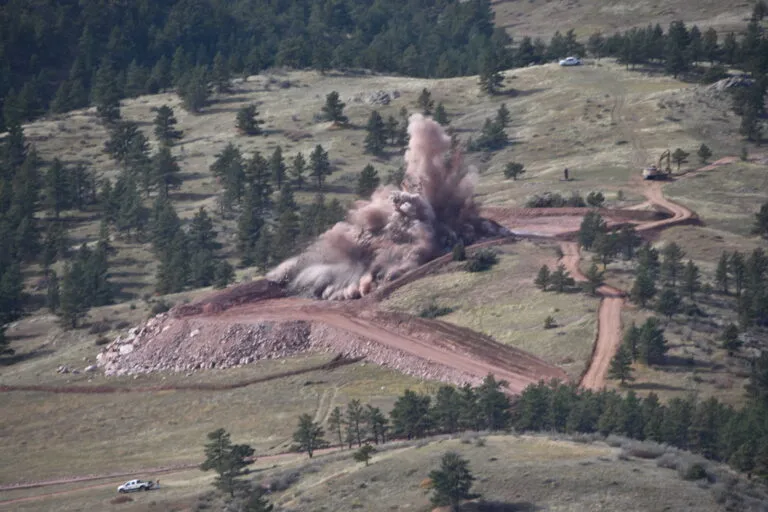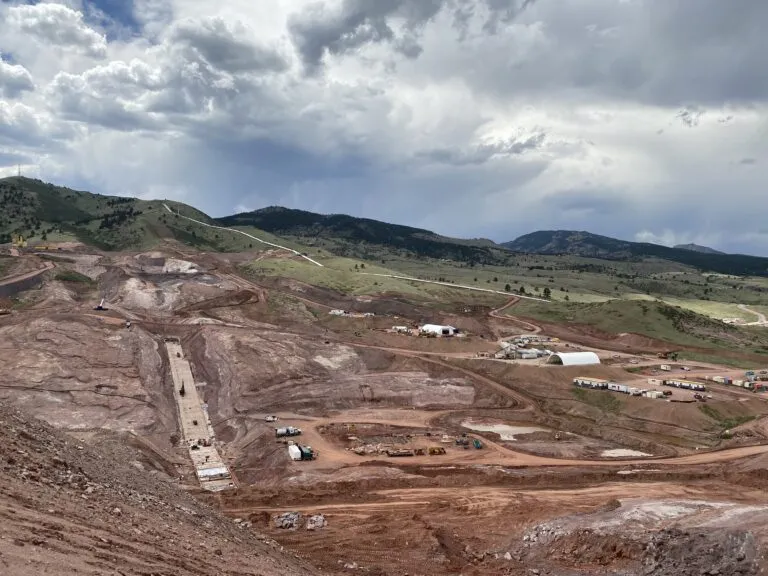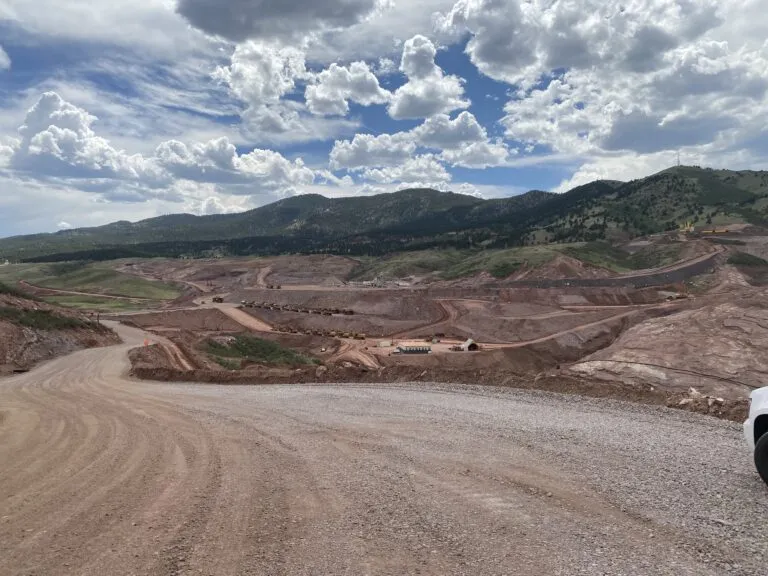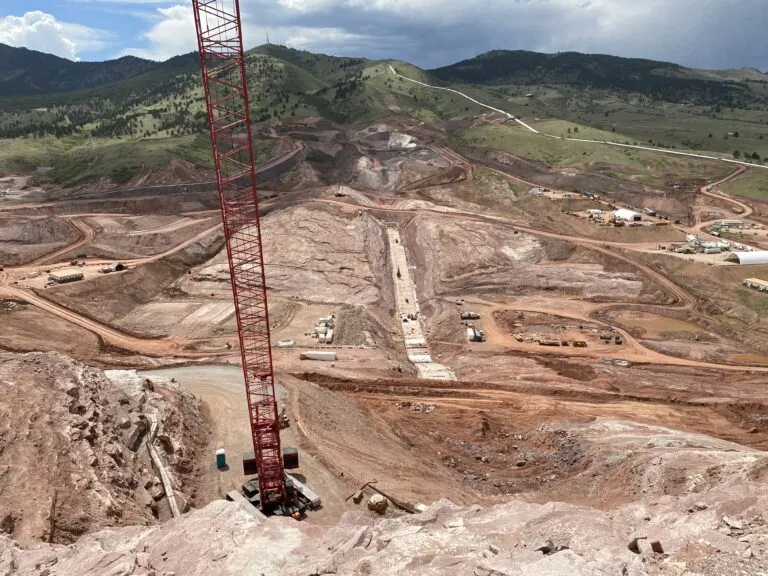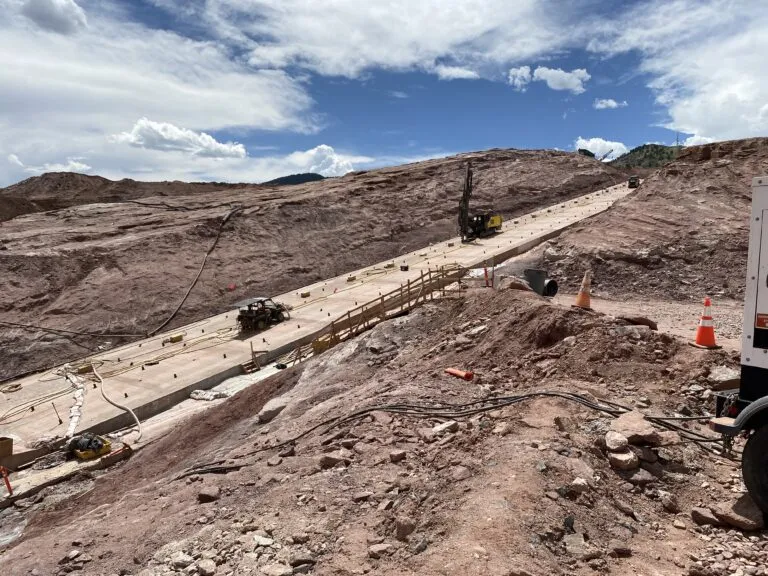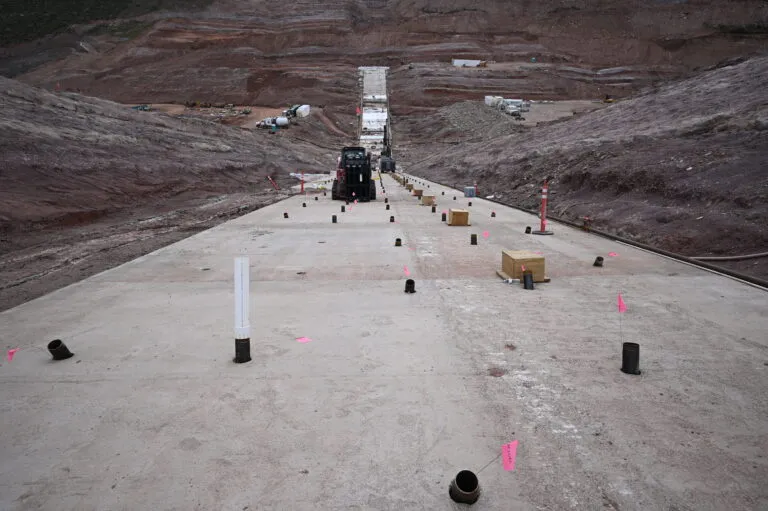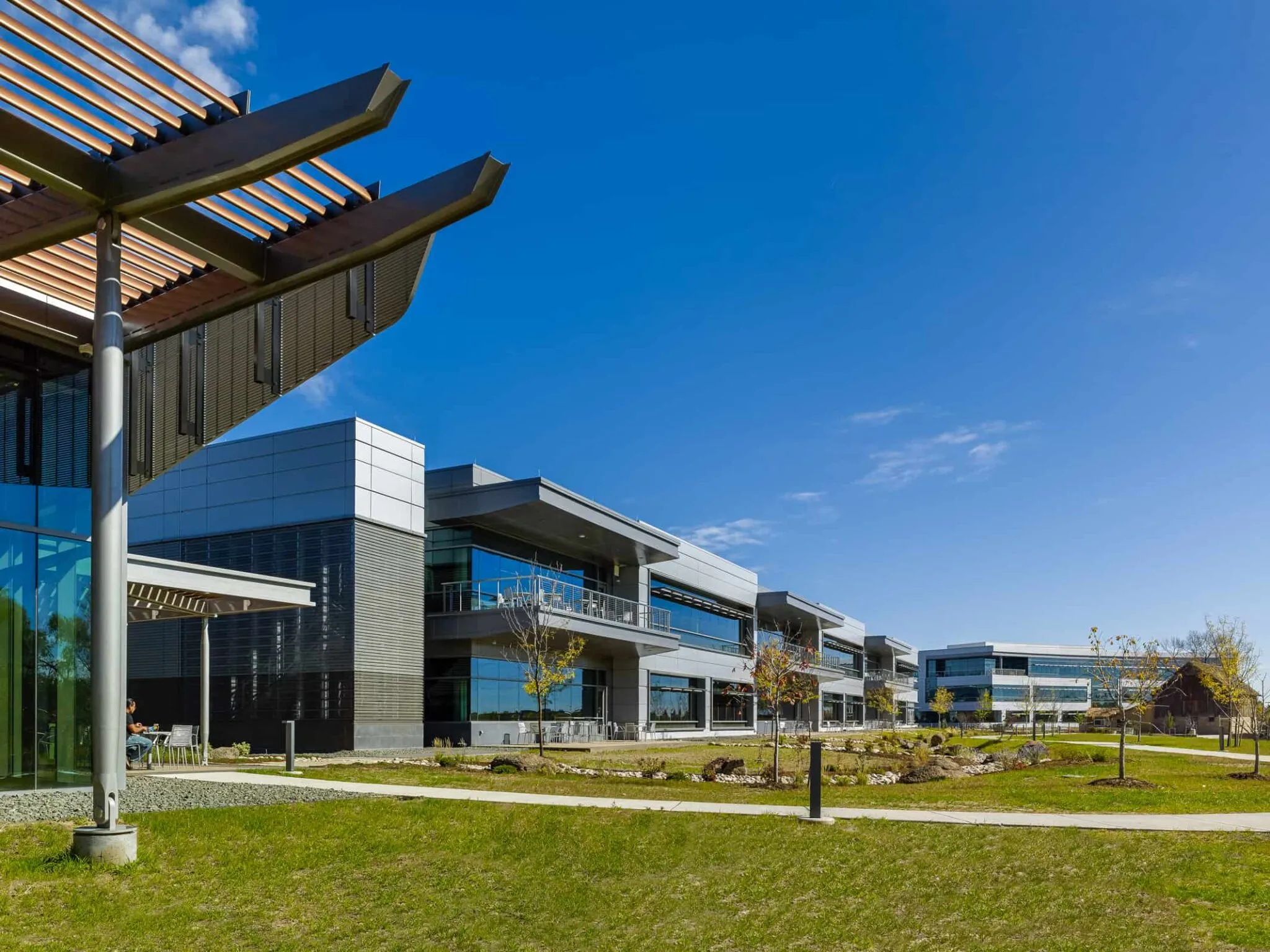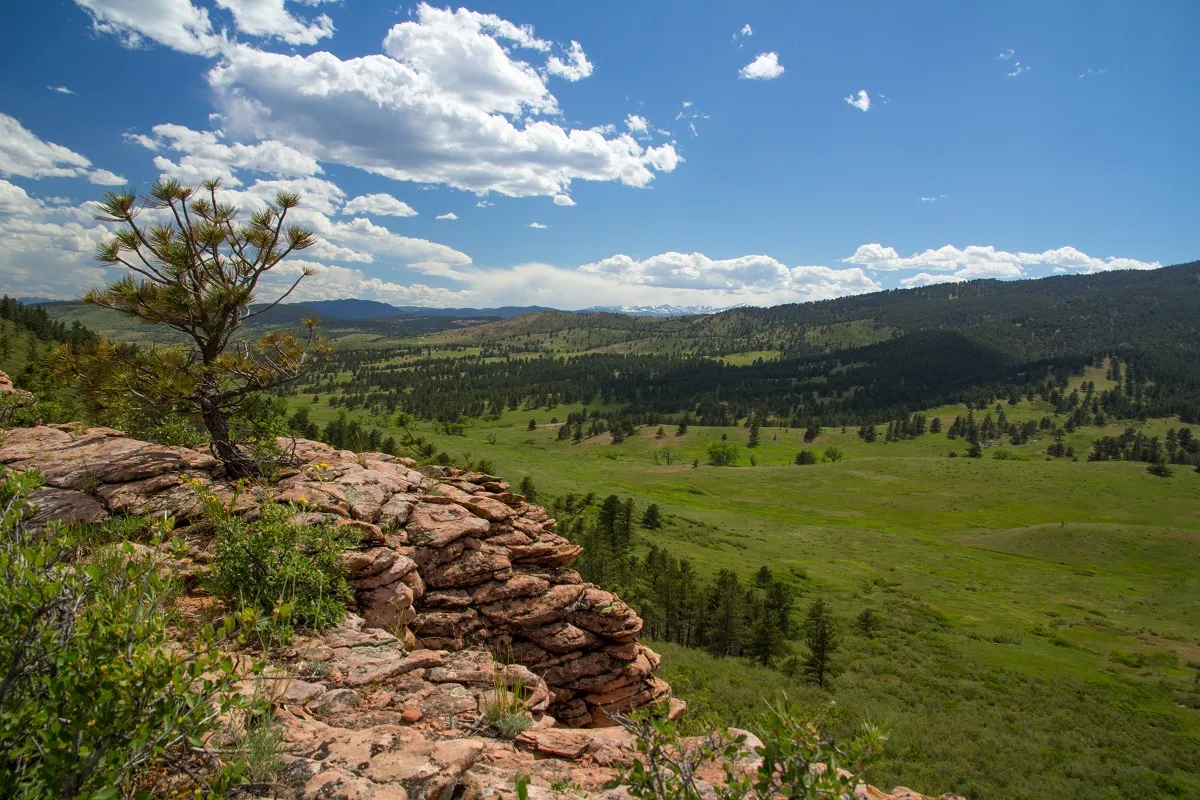Mega construction project takes shape at Chimney Hollow
First dam in 20 years will hold back 90,000 acre feet of water
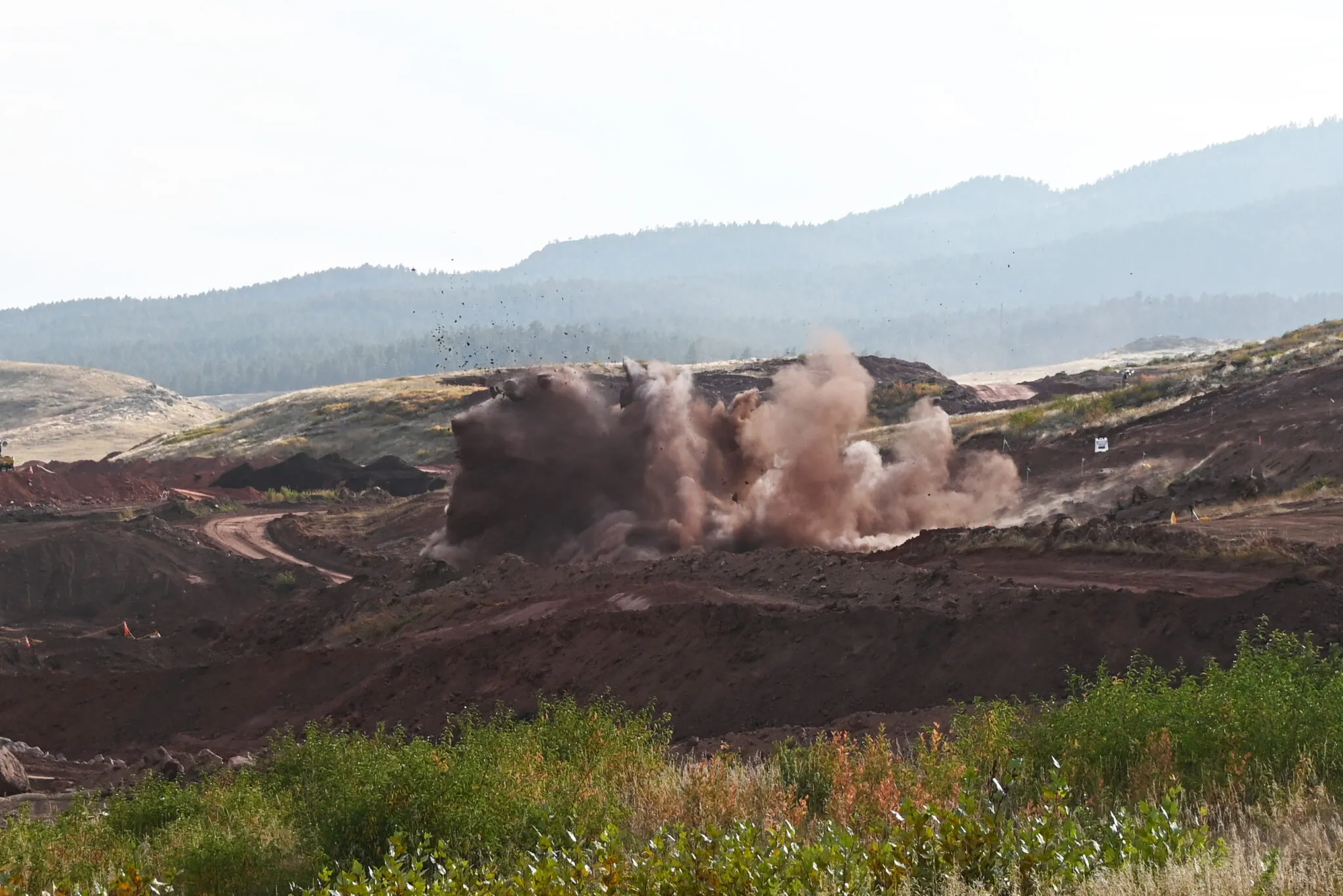
BERTHOUD — It’s been called one of the largest civil construction projects happening in the United States right now. It is the largest dam project in Colorado, and the only new dam project in the state, if not the nation, in the past 20 years.
It’s Chimney Hollow, just 17.5 miles west of the Northern Colorado Water Conservancy District headquarters in Berthoud.
Sitting west and above Carter Lake, when completed it will hold about 90,000 acre feet of water from the Windy Gap diversion project and make 30,000 of those acre feet available to the cities, water districts and other stakeholders each year.
SPONSORED CONTENT
While all dam projects come with environmental and sometimes sociological concerns, it’s hard not to marvel at the engineering feat that is gradually taking shape on Chimney Hollow Road in Larimer County.
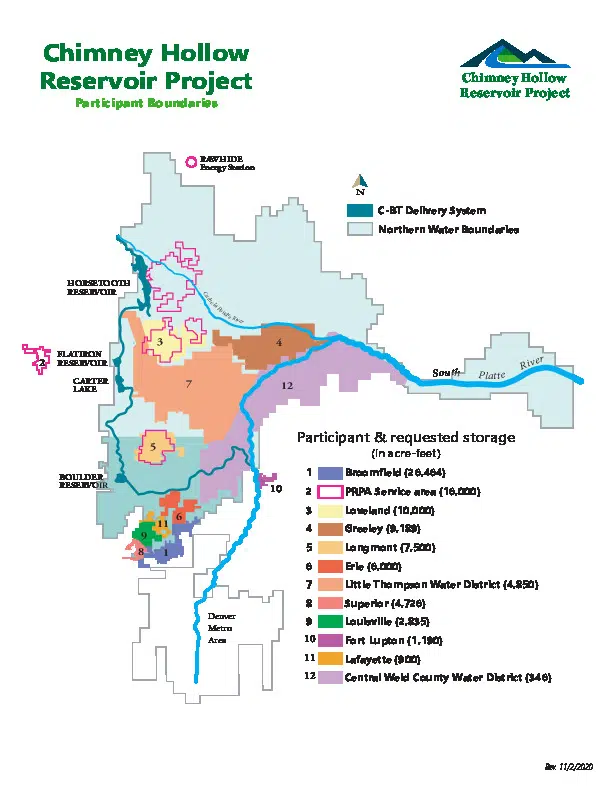
Origins
Chimney Hollow has its roots in an effort of six cities beginning in 1970 to secure additional future water supplies. Those six cities — Boulder, Estes Park, Longmont, Loveland, Fort Collins and Greeley — formed the Northern Water Municipal Subdistrict. The Windy Gap project was designed to deliver an average of 48,000 acre feet of water per year from the Colorado River while maintaining a flow below the project of 90 cubic feet per second.
In 1981, construction began on the Windy Gap project. By 1985, the project had built a diversion dam on the Colorado River, a 445-acre-foot reservoir, a pump plant and a six-mile pipeline to move water into the Colorado-Big Thompson storage and distribution system.
The water is pumped on the Western Slope from Lake Granby to the Granby Pump Canal, then to Shadow Mountain Reservoir, then to Grand Lake. From there, it goes through the Adams Tunnel and is distributed using the C-BT reservoirs, canals and pipelines.
In a somewhat counterintuitive way, the limitations of the Windy Gap project became realized. In wet years, the project produces less water for its member cities.
That’s because of storage. In wet years, the Western Slope reservoirs “spill” because they can’t hold all the water available.
“It’s a legacy project; we’re so happy to be a part of this project. It’s one of the premier heavy civil projects going on the country right now.”
Jeremy Deuto, Northern Water project manager
Thus, the Windy Gap Firming Project was envisioned. The six cities through sales and trade of water shares adjusted their inventories so that now 15 entities have shares in Windy Gap. Twelve of those cities, water districts and a utility chose to participate in building Chimney Hollow on the Eastern Slope to “firm” the supply of Windy Gap water. By 2025, water will begin to fill the project.
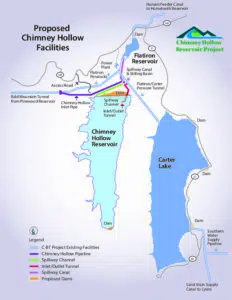
The details
Chimney Hollow, named according to Northern Water project manager Jeremy Deuto for a chimney of a long-abandoned settlement, is being built on property once owned by Hewlett-Packard Co. and intended for an employee retreat. It was largely undeveloped land, although a ranch house and barn were on the property and demolished prior to construction. Northern Water and Larimer County paid $4 million to secure title to the property. Northern owns the land below the waterline of the future reservoir, and Larimer County owns the land around it.
The project includes two dams. At the southern end of the reservoir will be what is called a “saddle dam” that will be 50 feet tall and use a typical rock-fill embankment with a clay core. The main dam is on the north end of the reservoir and is identified as a 350-foot dam, although parts of it will be taller. “It’s 392 feet from the deepest point to the top,” said Deuto, who is Northern Water’s engineer for the project. In addition, components of the dam extend 230 feet below the grade to tie into the bedrock. Excavation occurred in preparation for the dam, meaning the base of the dam is about 100 feet below where the former surface of the valley existed, Deuto said.
The dam is 3,700 feet in length from one side of the Chimney Hollow valley to the other. While the center of the dam is level, as the foundation or plinth for the dam climbs up the valley sides, it presents the challenge of creating a flat surface when pouring concrete on a slope.
The reservoir itself will be 330 feet deep at its deepest point, Deuto said, which is deeper than either Carter Lake or Horsetooth Reservoir. Surface area will be 740 acres.
The main dam will also have a rock-fill embankment from rock quarried onsite but use an asphalt core (See related story.) that is somewhat unusual in the United States although common elsewhere in the world. Swiss company Walo International Ltd. was hired to build the asphalt core.
The dam will be the third-tallest in Colorado, with Navajo Dam in southwest Colorado and Blue Mesa Dam near Gunnison taller. It’s roughly twice the size of the Carter and Horsetooth dams and will be bigger than the future Glade Reservoir dam that will be part of the Northern Integrated Supply Project north of Fort Collins. The Glade dam will be similar in length but about 100 feet shorter, Deuto said.
When complete, the dam will hold back 90,000 acre feet of water and make 30,000 acre feet available each year to the subdistrict membership. An acre foot is 326,000 gallons — enough to cover an acre of land one foot deep.
By comparison, Carter Lake holds 112,230 acre feet of water, and Horsetooth Reservoir holds 156,735 acre feet.
Water to fill the reservoir will come through the Bald Mountain Tunnel from Pinewood Reservoir that also feeds Flatiron Reservoir and the powerplant that exists there. Windy Gap water will be diverted from the tunnel before it reaches Flatiron through a new Chimney Hollow Inlet pipe. The pipe will empty into a massive inlet/outlet portal that is being carved out of the rock just north of the main dam. The 22-foot diameter, 2,000-foot-long tunnel will have a valve chamber within to control whether the water is coming in for storage or out for distribution. The tunnel work, a specialty of contractor Barnard Construction Co. Inc., (See related story.) is progressing at about 40 feet per month through the sandstone geology of the area.
Recreation
Chimney Hollow will have recreational aspects once complete. Larimer County will build parkland around the reservoir, and Northern Water is helping.
“We’re building in conjunction with Larimer County an extension of County Road 18E. Just upstream from the reservoir will be a parking area and we’re building a boat launch area. Larimer County will build the bathrooms,” Deuto said.
The park will be available for daytime use, not camping. Camping is available just a short distance northeast at Flatiron Reservoir.
Trails will connect with the trail systems at Carter Lake.
The reservoir will be stocked with fish, and wakeless boating will be permitted — sailboats, kayaks, fishing boats with trolling motors, for example.
Reuse provisions
Broomfield and Superior, two relatively new members of the group building the reservoir, are among the many who find Windy Gap’s reuse provisions to be of critical importance to their ability to meet future water needs.
That’s because Windy Gap water, which will be made more reliable once the Chimney Hollow reservoir is complete, can be “used to extinction.”
Unlike the water coming from the Colorado Big Thompson project, which can be used once and then must be permitted to flow downstream to users in eastern Colorado, Windy Gap water can be used and used again if a community determines how to treat and put it back into play.
And that isn’t all that difficult, because nearly every community already has wastewater-treatment plants. Windy Gap water is treated for potable use, used for drinking or otherwise put to domestic use. When it goes down the drain, it flows to the wastewater treatment plant, and the treated wastewater can be captured for a secondary use without regard for water users downstream.
Clint Folsom, mayor of Superior who was among a group touring the construction site in May, said Superior uses the Windy Gap water for irrigation once it is first used for human consumption.
The same is true in Broomfield, the largest shareholder in the Windy Gap project with 29.4% of the Chimney Hollow storage.
Brennan Middleton, water resources manager for Broomfield, said his community gets water from two sources: Denver Water and Northern Water. The Northern Water components include single-use C-BT water and the Windy Gap water.
Because Windy Gap water is “fully consumable” and can be used again and again, it takes pressure off the single-use water supply. The city avoids using the single-use water for irrigation, thus preserving it for human consumption.
“That’s why full utilization is important for both potable and nonpotable uses,” said Middleton.
“We’re anticipating about 40,000 new residents before buildout [of the community], and we’re situated well. The firming project is critical to full buildout,” he said.
Without the storage represented by Chimney Hollow — the so-called “firming project” — water that member utilities are permitted to use cannot be guaranteed.
Finances
The project is expected to cost about $690 million, which includes the land, design work, engineering, construction, permits, environmental mitigation and staff time. The budget was fixed in 2020, according to Joe Donnelly, project manager and water resources engineer with Northern Water. Barnard Construction’s part of that cost is about $510 million, he said.
A $49 million contingency was included in the $690 million budget, and the contingency has been available to cover unanticipated costs caused by litigation or other delays, including delays caused by environmental challenges.
Through May, $80.6 million of the project cost has been spent, Donnelly said.
Project for all times
Deuto, who joined Northern Water in 2021 after a career in geology and engineering, recognizes that he and other members of the Northern Water staff are working on an historic project that began more than 20 years ago.
“It’s a legacy project; we’re so happy to be a part of this project. It’s one of the premier heavy civil projects going on the country right now,” he said.
Shares of Chimney Hollow’s 90,000 acre feet
Broomfield – 26,464 AF
Platte River Power Authority – 16,000 AF
Loveland – 10,000 AF
Greeley – 9,189 AF
Longmont – 7,500 AF
Erie – 6,000 AF
Little Thompson Water District – 4,850 AF
Superior – 4,726 AF
Louisville – 2,835 AF
Fort Lupton – 1,190 AF
Lafayette – 900 AF
Central Weld County Water District – 346 AF
Original Municipal Subdistrict (Windy Gap) participants
Boulder
Estes Park
Fort Collins
Greeley
Longmont
Loveland

